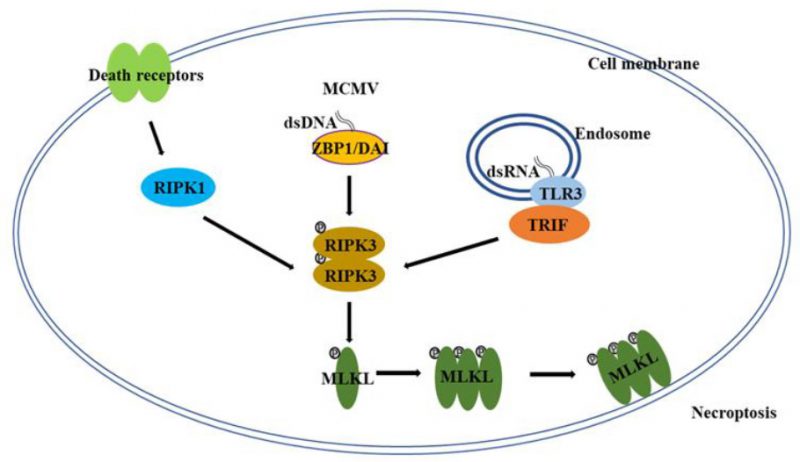Back to article: Necroptosis, tumor necrosis and tumorigenesis
FIGURE 1: A simplified scheme of the molecular mechanism of necroptosis. In certain types of cells/tissues, necroptosis can be induced through different pathways under certain conditions including the engagement of death receptors and the infection of DNA or RNA viruses (MCMV: mouse cytomegalovirus). While RIPK3 and MLKL proteins are the core components of the necroptotic machinery, RIPK1, ZBP1/DAI, and TRIF are the key effectors that orchestrate the necroptotic process by recruiting RIPK3 in response to different stimuli. The aggregation of RIPK3 results in the autophosphorylation of the protein and the activated RIPK3 will phosphorylate MLKL and induce the oligomerization of MLKL, which then initiates the execution of necroptosis. DAI: DNA-dependent activator of interferon; MLKL: mixed lineage kinase domain-like; RIPK: receptor interacting protein kinase; TRIF: Toll-interleukin receptor-domain-containing adapter-inducing interferon-β; ZBP: Z-DNA-binding protein.

